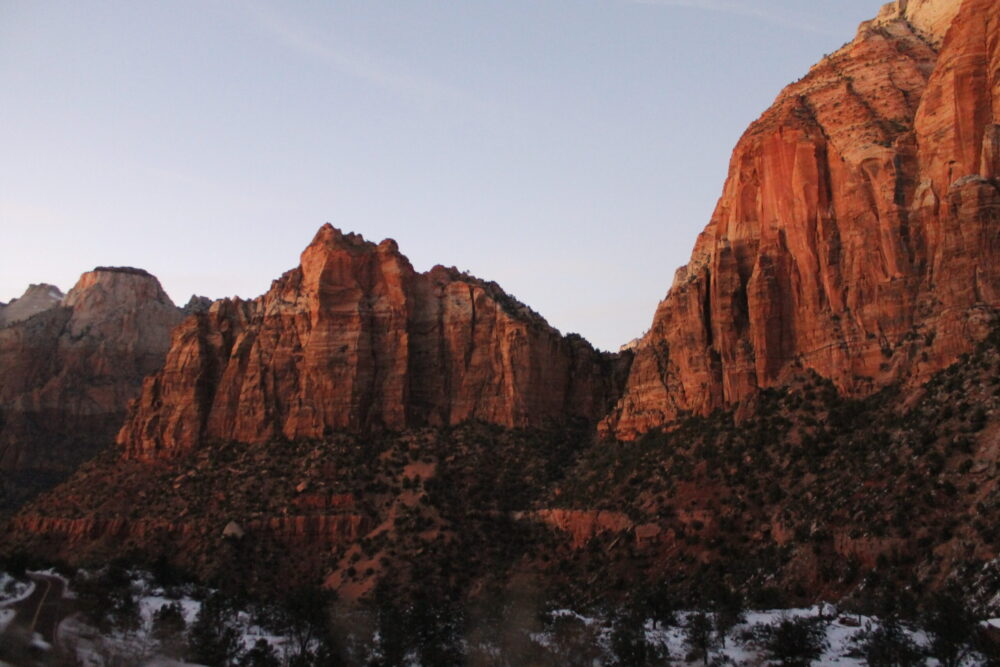The best national parks to visit in the United States stand out for their beautiful landscapes, outdoor activities, and unique experiences. From iconic places like Yosemite and Yellowstone to breathtaking wonders like Glacier and Grand Canyon National Park, these parks offer something for everyone.
Many of the top-rated parks feature famous hiking trails, rich wildlife, and incredible views. Some spots, such as Acadia National Park, are also known for their special seasonal highlights, like fall foliage or early sunrises. Choosing which parks to visit depends on scenery, interests, and the kind of adventures travelers want to have.
Travelers looking for the best nature experiences can use this guide to find popular parks, must-see places, and a few hidden gems. With so much to see across the country, these parks provide excellent opportunities for hiking, sightseeing, and connecting with nature.
Top Must-Visit National Parks in the United States
These national parks are known for their breathtaking viewpoints, one-of-a-kind natural wonders, and a variety of activities, from hiking to sightseeing. Each park has unique features, from geysers to towering cliffs and deep canyons.
Yellowstone National Park
Yellowstone National Park is the first national park in the world. It covers parts of Wyoming, Montana, and Idaho. The park is famous for its geysers, especially Old Faithful, and its large populations of wildlife like bison, elk, and grizzly bears. Visitors can walk along boardwalks and watch bubbling hot springs and colorful pools.
Fishing, camping, and hiking are popular activities. The park has more than 900 miles of trails and a number of scenic drives. In winter, Yellowstone is known for snowshoeing, cross-country skiing, and snowmobiling. The park’s vast landscapes provide a sense of open space that is hard to find elsewhere.
Facilities include visitor centers, campgrounds, and lodges that operate in various seasons. Due to its geothermal features and wildlife, travelers are advised to keep safety in mind while exploring.
Grand Canyon National Park

Grand Canyon National Park draws millions of visitors each year with its massive, colorful canyon carved by the Colorado River. The South Rim offers famous viewpoints like Mather Point and Yavapai Observation Station. Both rims give access to panoramic views and dramatic sunrises and sunsets.
The park’s main activities include hiking, mule rides, and rafting trips on the river. For those interested in hiking, the Bright Angel Trail and South Kaibab Trail are among the most popular routes down into the canyon.
A shuttle system helps visitors get around busy areas. The North Rim is more remote and less crowded, open only from mid-May through October.
Yosemite National Park

Yosemite National Park, in California’s Sierra Nevada, is well known for its granite cliffs, waterfalls, and giant sequoias. The most famous sights are El Capitan, Half Dome, and Yosemite Falls, all visible from Yosemite Valley.
More than 750 miles of trails give options for both short walks and challenging hikes. Climbing and photography are popular, especially in spring when waterfalls are at their peak.
Facilities include campgrounds, hotels, and shuttle services. Yosemite also protects ancient forests, meadows, and rivers, making it home to a variety of plant and animal life.
Iconic National Parks by Region
Travelers find unique scenery, wildlife, and outdoor adventure in nearly every part of the country. Some regions offer towering mountains, while others feature lush forests, remote lakes, or dramatic coastlines.
Western U.S. National Parks
The western states have some of the most famous national parks in the United States. Yellowstone National Park spans Wyoming, Montana, and Idaho. Visitors come for geysers like Old Faithful, vast wildlife, and hot springs. Yosemite National Park in California is known for its towering granite cliffs, including El Capitan, and waterfalls like Yosemite Falls. Glacier National Park in Montana offers dramatic mountains, clear lakes, and hiking trails through wildflower meadows.

Other notable parks in the West include Grand Canyon National Park in Arizona and Zion National Park in Utah. These parks boast spectacular canyons, unique rock formations, and some of the most visited hiking trails in the country.
Southern U.S. National Parks
The South features parks with warm climates and unique environments. Everglades National Park in Florida protects one of the world’s largest tropical wetlands. Guests can see alligators, wading birds, and rare plants while traveling by boat or on boardwalks.
Big Bend National Park in Texas borders the Rio Grande and showcases wide desert landscapes, rocky canyons, and star-filled night skies. This park is popular for hiking, river trips, and spotting unique desert animals. The South also includes Mammoth Cave National Park in Kentucky, famous for the world’s longest cave system open for guided tours and exploration.
Eastern U.S. National Parks
The East may have fewer parks, but it offers historic sites and scenic beauty. Acadia National Park in Maine is prized for rugged coastlines, forested mountains, and sweeping views from Cadillac Mountain. Visitors enjoy hiking, bird-watching, and cycling the old carriage roads.

In North Carolina and Tennessee, Great Smoky Mountains National Park draws millions each year. The park is famous for its misty peaks, dense forests filled with wildflowers, and diverse wildlife including black bears and elk. Fall brings vibrant leaf colors that cover the landscape.
Midwestern U.S. National Parks
The Midwest is home to parks with prairies, lakes, and sand dunes. Badlands National Park in South Dakota offers striking rock formations, mixed-grass prairie, and fossils dating back millions of years. Bison and bighorn sheep roam here.
Isle Royale National Park in Michigan sits on an island in Lake Superior. It is known for its remote wilderness, moose populations, wolves, and top-rated backpacking trails. The Indiana Dunes National Park, set along Lake Michigan, has sandy beaches, marshes, and woodlands. Visitors enjoy swimming, birdwatching, and nature walks throughout the year.
Best Times to Visit National Parks
The best time to visit American national parks depends on both the season and how busy the parks get with visitors. Timing affects weather, available activities, and how crowded trails and accommodations might be.
Seasonal Recommendations
Each park has its own ideal season. Most U.S. national parks offer pleasant weather and open facilities in late September and October. During these months, days are warm but not too hot, and most summer crowds are gone. Parks in the Southwest, like Zion or the Grand Canyon, often have mild, sunny days in spring and fall.
Spring is a great time to see wildflowers in parks like the Great Smoky Mountains and Yosemite. In the summer, northern parks such as Glacier or Yellowstone have the best weather for hiking and camping, but they can get crowded. If avoiding snow is important, late spring through early fall is usually safest for most destinations.
For a park in the desert, like Death Valley, winter and early spring are much more comfortable, as summer temperatures become dangerously high.

Avoiding Crowds in Popular Parks
Peak tourist season is often mid-June through mid-August, when families visit during school vacations. To avoid crowds, visitors should aim for early spring, late fall, or even winter in parks that stay open all year. Weekdays are less crowded than weekends.
Popular parks like Yosemite, Yellowstone, and the Grand Canyon see the largest crowds on holidays and summer weekends. Traveling just after Labor Day, when schools are back in session, can mean shorter lines and quieter trails. Travelers can also enter parks early in the morning or later in the afternoon to enjoy popular spots with fewer people.
Lower accommodation rates are often available in the shoulder seasons.
Tips for Planning a National Park Trip
Picking the best national park depends on the activities, scenery, and time of year. Travelers should also think about transportation, where to stay, and what to book early.
Choosing the Right Park for Your Interests
Different national parks suit different interests and activity levels. Some parks, like Yellowstone and Grand Canyon, are known for famous landmarks and easy access. Others, like Glacier or Isle Royale, appeal to those seeking remote adventures and wildlife.
Those who love hiking and photography may prefer parks with scenic trails and unique landscapes, like Zion or Acadia. Families with young children might choose places with visitor centers, short hikes, and easy amenities, such as Shenandoah.
Weather, crowds, and wildlife viewing also matter. Spring and fall are often the best times since there are fewer visitors and mild weather. Some parks are less crowded or more beautiful at certain times.
Travel and Accommodation Advice
Booking travel and lodging early is important for national park trips. Popular parks fill up months in advance, especially in summer and on holidays. Visitors should decide if they want to camp, stay in a park lodge, or book a hotel nearby. Many lodges inside the parks are booked quickly, sometimes a year ahead.
Road access and shuttle services differ between parks. Some locations, like Yosemite, have shuttle buses or require parking reservations.
Packing for weather and distance is also key. Bring layers, rain gear, water, and sturdy shoes. Double-check park alerts for trail closures or restrictions. Use trip planning checklists or apps to stay organized and prepared.




